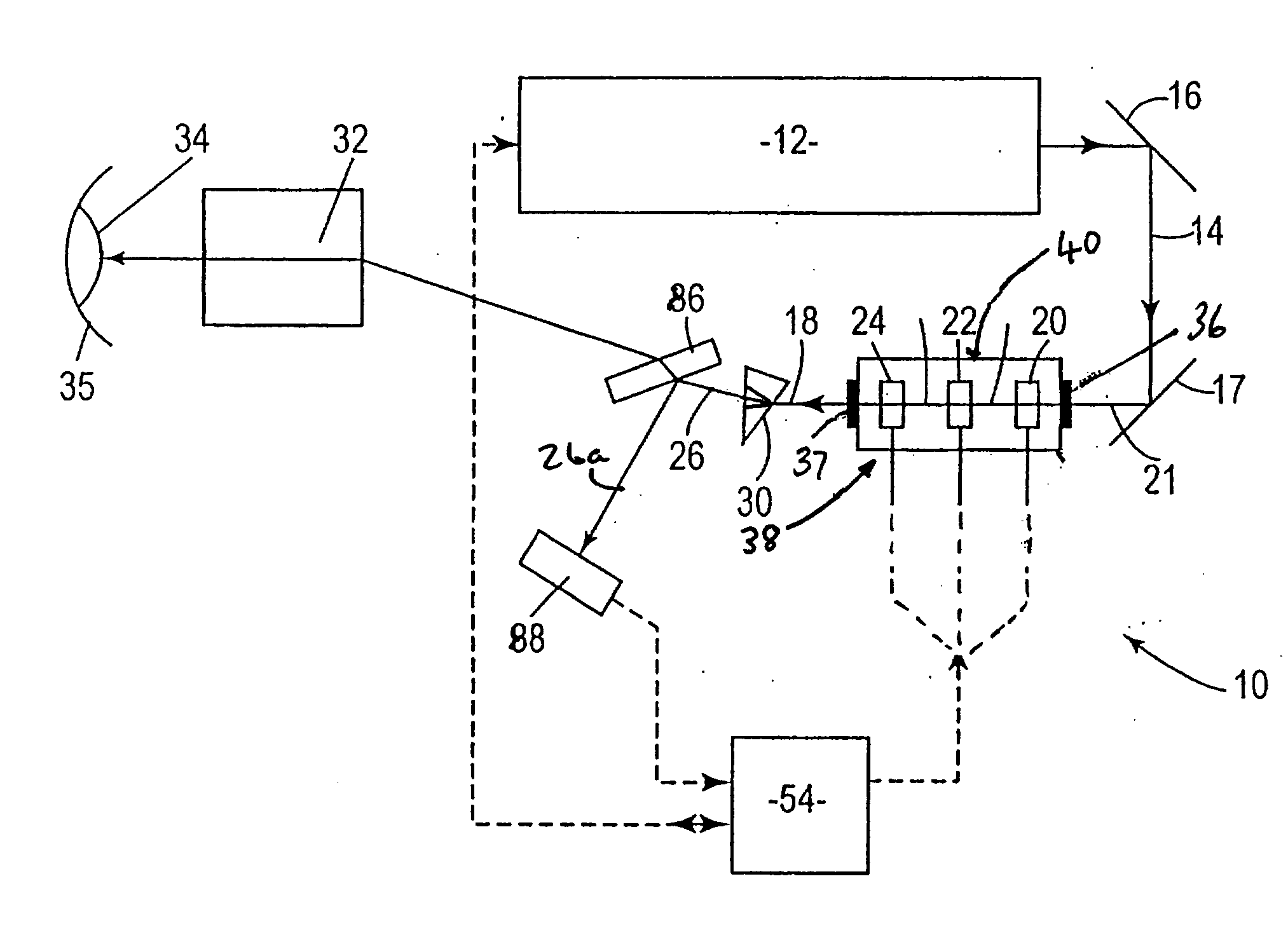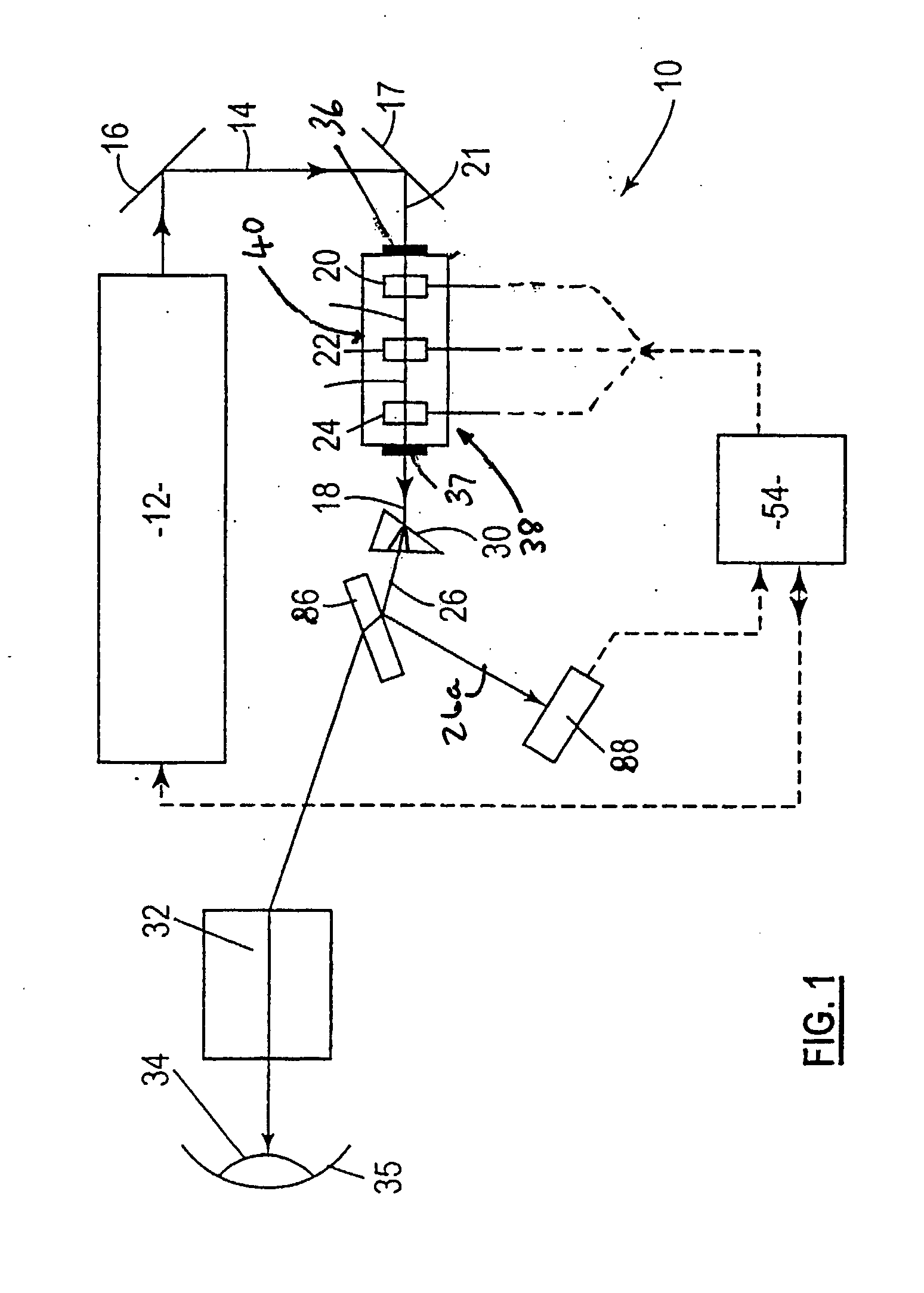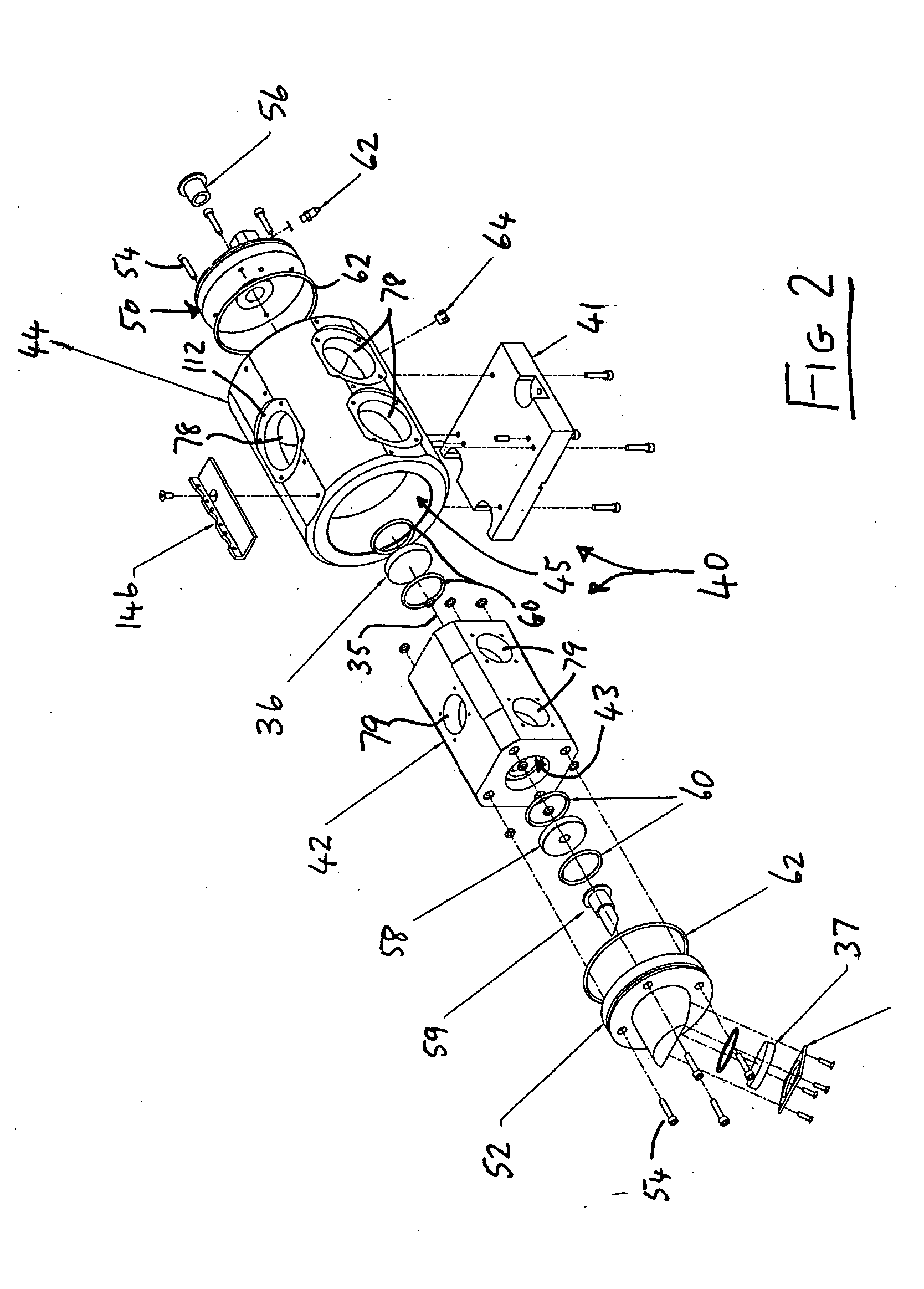Housing for Harmonic Generation Crystals in Solid State Laser Systems
a laser system and crystal technology, applied in the direction of laser details, optics, instruments, etc., can solve the problems of high operating and maintenance costs, and high dependence on a gas that must be regularly replaced, so as to reduce the conversion efficiency and reduce the stress on the crystal
- Summary
- Abstract
- Description
- Claims
- Application Information
AI Technical Summary
Benefits of technology
Problems solved by technology
Method used
Image
Examples
Embodiment Construction
[0036] An optical diagram for an ophthalmic laser beam generation system 10 is depicted in FIG. 1. The system 10 includes a solid state laser 12 that emits a primary laser beam 14 in the infra-red region of the electromagnetic spectrum. Primary laser beam 14 is guided by optical elements, in this case mirrors 16, 17, along an optical alignment or axis 21, through a series of non-linear optical (NLO) crystals 20, 22, 24 from which emerges a multi-component output beam 18. Beam 18 comprises the original beam 14 and several harmonics generated by crystals 20, 22, 24. The desired harmonic is separated out by a prism 30, or a by dichroic mirror arrangement.
[0037] In an application for refractive eye surgery by photo-ablation, beam 26 is directed by a beam delivery system 32 onto the cornea 34 of an eye 35.
[0038] NLO crystals 20, 22, 24 are mounted within a protective housing 40 of crystal housing apparatus 38 of the form illustrated in FIGS. 2 to 5, and aspects of their environment are...
PUM
| Property | Measurement | Unit |
|---|---|---|
| wavelength | aaaaa | aaaaa |
| operating wavelength | aaaaa | aaaaa |
| wavelength | aaaaa | aaaaa |
Abstract
Description
Claims
Application Information
 Login to View More
Login to View More - R&D
- Intellectual Property
- Life Sciences
- Materials
- Tech Scout
- Unparalleled Data Quality
- Higher Quality Content
- 60% Fewer Hallucinations
Browse by: Latest US Patents, China's latest patents, Technical Efficacy Thesaurus, Application Domain, Technology Topic, Popular Technical Reports.
© 2025 PatSnap. All rights reserved.Legal|Privacy policy|Modern Slavery Act Transparency Statement|Sitemap|About US| Contact US: help@patsnap.com



